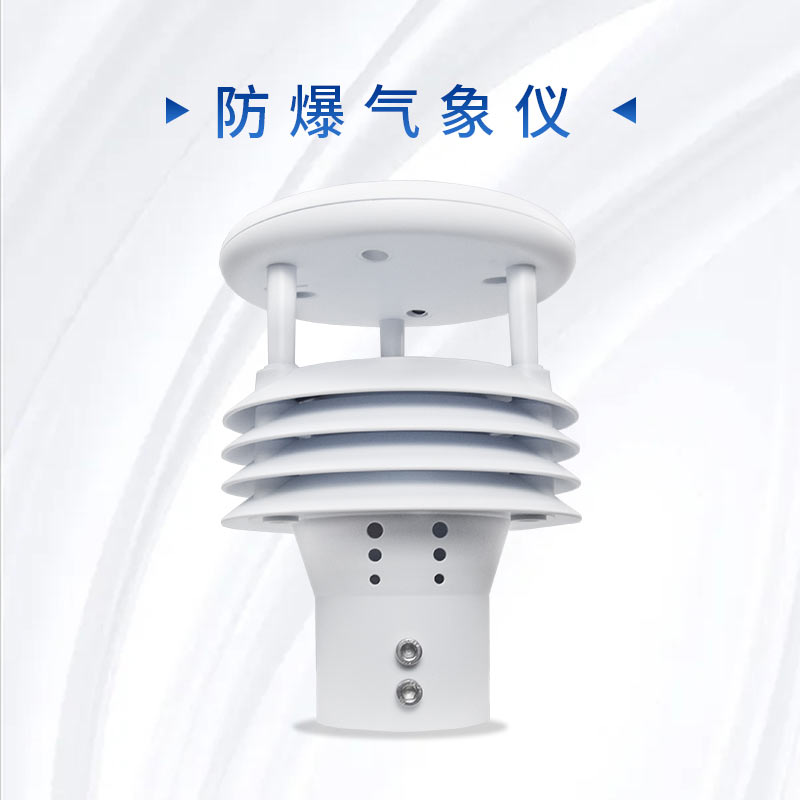Shandong Fengtu IOT Technology Co., Ltd
Sales Manager:Ms. Emily Wang
Cel,Whatsapp,Wechat:+86 15898932201
Email:info@fengtutec.com
Add:No. 155 Optoelectronic Industry Accelerator, Gaoxin District, Weifang, Shandong, China

Sales Manager:Ms. Emily Wang
Cel,Whatsapp,Wechat:+86 15898932201
Email:info@fengtutec.com
Add:No. 155 Optoelectronic Industry Accelerator, Gaoxin District, Weifang, Shandong, China
time:2025-11-05 09:28:03 source:Weather Station viewed:125 time
Micro-meteorology refers to the atmospheric conditions within small-scale areas near the earth's surface. Key monitoring parameters include wind speed, wind direction, air temperature, humidity, atmospheric pressure, and optionally, rainfall. These parameters exhibit significant gradient variations vertically and may also differ in horizontal spatial distribution, directly impacting local air quality, pollutant dispersion, and production safety.
In industrial sites involving flammable and explosive substances—such as petroleum, chemical, natural gas, and mining operations—micro-meteorological monitoring serves as a critical link in ensuring safety. Wind speed and direction directly affect the dispersion path and accumulation level of flammable gases or volatile vapors. Excessively low wind speeds can hinder gas dispersion, potentially forming combustible gas clouds reaching explosion thresholds around equipment. Specific wind directions may carry leaked gases toward ignition sources or densely populated areas. Furthermore, air temperature and humidity not only influence the volatility of certain chemicals but may also interact with equipment internal temperatures, creating hazardous thermal conditions. Therefore, real-time and precise micro-meteorological monitoring in explosion-proof areas provides essential data for leak warnings, emergency evacuations, and ventilation system control, serving as a key technical measure to prevent fires and explosions at their source.
Responding to these market needs, the weather station manufacturer FengTu® has introduced the Explosion-Proof Sensor FT-WFB5: an integrated monitoring device specifically designed for hazardous environments. It has obtained certification from the National Center for Quality Supervision and Inspection of Explosion-Protected Electrical Products, achieving the "Ex ia IIC T6 Ga" explosion-proof qualification. This certification indicates the device is suitable for hazardous areas with Group IIC explosive gas atmospheres and Temperature Class T6, meaning its design and construction ensure it will not become an ignition source, enabling reliable operation under intrinsic safety conditions in hazardous areas.
Additionally, the sensor adopts a highly integrated, unified structural design, combining sensors for five key meteorological elements—wind speed, wind direction, temperature, humidity, and atmospheric pressure—into a single unit. This eliminates the complex installation and wiring associated with separate sensors. Its built-in high-precision core utilizes ultrasonic principles to measure wind speed and direction. With no moving parts, it avoids mechanical wear, enhances long-term measurement stability and service life, and reduces maintenance requirements.
The standard RS485 communication interface supports the Modbus-RTU protocol, facilitating seamless integration into various industrial automation control systems or safety instrumented systems. Multiple remote transmission options are available, including 4G wireless transmission and Ethernet wired transmission, enabling easy setup of remote monitoring networks for real-time data upload and centralized management.
In summary, the Explosion-Proof Sensor FT-WFB5 is a highly practical industrial-grade sensor. It provides a continuous, real-time, and accurate micro-meteorological monitoring solution for explosive hazardous environments like chemical plants and petroleum facilities, serving as essential infrastructure for strengthening corporate safety production monitoring and early warning systems.

Park weather station monitors elements such as temperature, humidity, and wind speed, serving the ecological management, visitor safety, and scientific research of scenic areas....
Agricultural Weather Stations is a high-precision observation device specifically designed for monitoring and recording meteorological data in fields and forest areas. It can automatically monitor the climate of farmland or forest areas, measuring common meteorological elements such as air temperature, humidity, soil moisture, soil temperature, wind speed, wind direction, rainfall, and light intensity. The data is used to guide precision irrigation, fertilization, and pest and disease control, improving crop yields. Furthermore, it optimizes greenhouse environmental control by analyzing temperature, humidity, and light data....
Weather stations, as the primary equipment for monitoring weather changes, play a crucial role in meteorological forecasting, environmental monitoring, agricultural production, and other fields. Among the diverse types of weather stations, the Portable Weather Station stands out with distinct featur...
In the field of meteorology, visibility is a crucial observation indicator, usually accurately represented by the meteorological optical range. In the aviation field, the precise measurement of the Visibility detector can ensure the safety of aircraft takeoffs and landings; in the transportation fie...